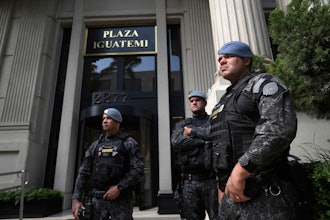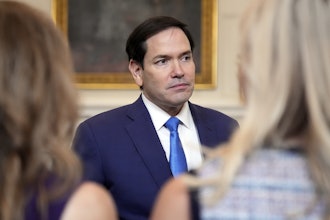
WASHINGTON (AP) — The costs of food, gasoline, shelter and medical care rose last month, yet inflation continues to run at low levels ahead of a Federal Reserve meeting next month to consider raising short-term interest rates for the first time in nearly a decade.
The consumer price index rose 0.2 percent in October after falling the prior two months, the Labor Department said Tuesday. Prices at the pump advanced 0.4 percent last month, but gas costs have plunged 27.8 percent from a year ago.
Cheaper energy prices coupled with a strong dollar that has made imports such as clothes more affordable has warded off inflation. The entire consumer price index has risen a mere 0.2 percent from a year ago. Core inflation, which excludes volatile food and energy prices, advanced 0.2 percent from September and 1.9 percent from a year ago.
Clothing and shoe expenses fell in October, as did prices for new autos. But grocery shoppers paid more for bread, bacon, chicken, turkey and fruits and vegetables increased last month.
Much of the inflation within the economy stems from accelerating rents and home values.
Shelter accounts for roughly a third of the index. Housing costs increased 0.3 percent in October and 3.2 percent in the past year.
Fed officials have been carefully monitoring the economy for an upturn in inflation as part of its plan to eventually raise short-term interest rates from historic lows. The U.S. central bank targets inflation at 2 percent, enough to encourage a healthy level of consumer spending while also warding off risks of deflation that could cause the economy to stall.
The unemployment rate has improved to a healthy 5 percent, compared to 5.7 percent a year ago. The strong job market has traditionally justified higher Fed rates, except that the level of inflation associated with a stable economy has yet to materialize. As a result, Fed policymakers have continued to hold the key federal funds rate — the interest banks charge each other overnight — at the near-zero levels set during the financial meltdown in 2008.
The Fed's preferred measure of inflation, personal consumption expenditures, has less of an emphasis on housing costs and has risen just 0.2 percent from a year ago.
Global economic pressures are also dampening inflation. The dollar has appreciated against foreign currencies such as the euro, making imported goods cheaper for consumers and businesses. At the same time, a slowdown in economic growth in China, Brazil and Japan — which just slipped into recession — has reduced demand for oil and other commodities, further suppressing prices.
Fed officials are scheduled to meet Dec. 15-16 to discuss the possibility of raising rates. Most market analysts anticipate that the December meeting will end with the first rate hike since the middle of 2006.


















